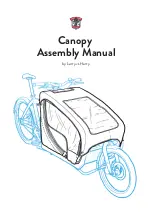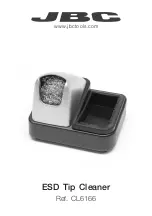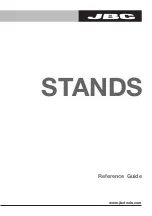
Installation and Service Instructions for Series
55,000; 55,200; 55,300; 55,400; 55,500 and 57,500
Important
Please read these instructions carefully
before installing, operating, or servicing
your Stearns Brake. Failure to comply with
these instructions could cause injury to
personnel and/or damage to property if the
brake is installed or operated incorrectly. For
definition of limited warranty/liability, contact
Rexnord Industries, LLC, Stearns Division,
5150 S. International Dr., Cudahy, WI
53110, (414) 272-1100.
Caution
1. Installation and servicing must be
made in compliance with all local safety
codes including Occupational Safety
and Health Act (OSHA). All wiring and
electrical connections must comply with
the National Electric Code (NEC) and
local electric codes in effect.
2. Do not install the brake in atmospheres
containing explosive gases or dusts.
3. To prevent an electrical hazard,
disconnect power source before working
on the brake. If power disconnect point
is out of sight, lock disconnect in the
off
position and tag to prevent accidental
application of power.
4. Make certain power source conforms to
the requirements specified on the brake
nameplate.
5. Be careful when touching the exterior of
an operating brake. Allow sufficient time
for brake to cool before disassembly.
Surfaces may be hot enough to be
painful or cause injury.
6. Do not operate brake with housing
removed. All moving parts should be
guarded.
7. Installation and servicing should be
performed only by qualified personnel
familiar with the construction and
operation of the brake.
8. For proper performance and operation,
only genuine Stearns parts should be
used for repairs and replacements.
9. After usage, the brake interior will
contain burnt and degraded friction
material dust. This dust must be
removed before servicing or adjusting
the brake.
DO NOT BLOW OFF DUST using an air
hose. It is important to avoid dispersing
dust into the air or inhaling it, as this
may be dangerous to your health.
a) Wear a filtered mask or a respirator
while removing dust from the inside of
a brake.
b) Use a vacuum cleaner or a soft brush
to remove dust from the brake. When
brushing, avoid causing the dust to
become airborne. Collect the dust in
a container, such as a bag, which can
be sealed off.
General Description
These series of brakes are spring-set,
electrically released. They contain one or
more rotating friction discs (4) driven by a
hub (16) mounted on the motor or other
shaft, except the 55,200 Series which has
the hub mounted on a shaft supported by
two brake bearings.
Operating Principle
These series contain one or more friction
discs (4) assembled alternately between
the endplate (2) friction surface, stationary
disc(s) (3) and pressure plate (also called
stationary disc) (3). The stationary disc(s)
are restrained from rotating by being keyed
into the endplate. With the brake released,
all disc pack components are free to slide
axially and the friction disc(s) to rotate.
Brake release occurs when the solenoid
coil is electrically energized, causing the
solenoid plunger to travel a specified
distance and through a lever system,
overcoming the pressure spring force. This
action releases the clamping force on the
disc pack, thereby allowing the friction
disc(s) and brake hub to rotate.
Brake
sets
and torque is produced when
electric current to the solenoid coil is
interrupted, thereby collapsing the solenoid
magnetic field. The solenoid plunger returns
to its original de-energized position allowing
the lever arm to move forward by virtue of
the compressed torque springs. This action
compresses the disc pack components
which applies a retarding torque to the brake
hub and ultimately restores the brake to a
spring-set static condition.
Caution!
While the brake is equipped with
a manual release to allow manual shaft
rotation, the motor should not be run with
the manual release engaged, to avoid
overheating the friction disc(s).
I. Installation Procedure
To remove housing, follow instructions listed
under each individual brake series in Figure
2, then continue with the following steps.
A. Method of installing 55,300; 55,500;
57,500 plus 55,000 and 55,400 Brakes
with standard enclosure:
1. Remove hub (16) from brake assembly,
using caution to preserve alignment
of friction disc(s) (4) for ease of brake
assembly. Do not operate manual release
until brake is installed. When removing
hub from brake on multi-disc brakes,
check that hub slides freely. If not, file
area of discs contacting hub so that discs
slide freely without binding.
Note 1:
On single-disc brakes the hub
may have moved far enough into brake to
be
locked in
by stabilizing springs (161).
Remove springs from friction discs, but
be sure to replace them in same position
and proper location after hub is removed.
(Locate at 90° in recessed portion of square
hole, with prongs pointing into brake.)
Stabilizing springs (161) are only used on
single disc brakes with square hub and
splined hub with the teeth removed for
stabilizing spring clearance.
®
Spring-Set Disc Brakes
P/N 8-078-925-00
effective 11/6/97






















